Discover How AI-Driven Solutions are Transforming Small to Medium Businesses by Enhancing Cybersecurity, Streamlining Operations, Improving Data Management, and Encouraging Innovation to Keep Your Business Competitive and Secure.
Enhancing Cybersecurity with AI-Driven Solutions
In today’s digital landscape, cybersecurity is crucial for small to medium businesses. AI-driven solutions are changing how businesses protect their assets and data from cyber threats. By using machine learning algorithms, AI can identify unusual activities and potential threats in real-time, offering a proactive defense against cyberattacks. This is especially important given the growing number and complexity of cyber threats.
For example, AI-powered tools can analyze large volumes of data to spot patterns that might indicate a security breach. These tools can then automatically respond to threats, reducing risks before they escalate. Additionally, AI improves the ability to predict future attacks by learning from past incidents, continuously enhancing security measures. This not only ensures strong protection but also builds trust among stakeholders regarding the business’s commitment to safeguarding their data.
Optimizing Infrastructure for AI Workloads
Implementing AI workloads requires a strong and scalable infrastructure. Many small to medium businesses face challenges with their current IT infrastructure’s ability to handle the demanding computational needs of AI technologies. Optimizing infrastructure is essential for the successful implementation and scaling of AI projects.
Businesses are investing in modern technologies that offer scalability and flexibility to meet current and future AI demands. This includes boosting computing power, optimizing network performance, and ensuring robust cybersecurity measures. As AI continues to evolve, the need for infrastructure that can support increased power consumption and sophisticated data processing becomes even more critical.
For instance, many businesses are turning to cloud-based solutions and edge computing to efficiently distribute AI workloads. These technologies not only provide the necessary computational power but also offer the flexibility to scale AI operations as needed. By prioritizing infrastructure readiness, businesses can ensure that their AI initiatives are deployed effectively and achieve the desired results.
Revolutionizing Data Management and Integration
Data is the backbone of AI. Effective data management and integration are crucial for leveraging AI’s full potential. However, many small to medium businesses face challenges in this area, such as data fragmentation, inconsistencies in data preprocessing, and integration issues with analytics tools.
To address these challenges, businesses need to implement robust data frameworks that ensure data quality, consistency, and accessibility. This includes setting up data stewardship roles and responsibilities, integrating analytics tools with data sources, and improving data governance protocols.
AI-driven data management solutions can significantly enhance a business’s ability to harness data for AI projects. For example, AI can automate data cleaning and preprocessing, ensuring that the data used for AI training is of high quality. Additionally, AI can help in tracking data lineage, ensuring that data sources are traceable and compliant with regulatory standards. By revolutionizing data management, businesses can unlock new insights and drive more informed decision-making.
Fostering a Culture of AI Innovation
Successfully adopting AI goes beyond technology; it requires a cultural shift within the business. Fostering a culture of AI innovation involves engaging all stakeholders, from management to frontline employees, and creating an environment that supports experimentation and continuous learning.
Businesses should proactively address any concerns employees might have about the impact of AI on their roles. Providing necessary support and resources for upskilling and reskilling can help employees feel more confident and optimistic about AI adoption. Additionally, establishing incentive programs that encourage responsible experimentation with AI can motivate employees to explore creative solutions and new applications of AI technologies.
For example, businesses can implement regular training sessions and workshops to keep employees updated on the latest AI developments. By celebrating achievements in AI and recognizing the contributions of employees, businesses can create a supportive environment that fosters innovation and drives AI success.
Leveraging AI for Competitive Advantage
In today’s competitive landscape, leveraging AI can provide small to medium businesses with a significant edge. AI-driven solutions can enhance business processes, improve customer experiences, and identify new revenue streams. By integrating AI into various aspects of operations, businesses can achieve greater efficiency, innovation, and market differentiation.
For instance, AI can streamline supply chain operations by predicting demand patterns and optimizing inventory management. In customer service, AI-powered chatbots and virtual assistants can provide personalized support, improving customer satisfaction and engagement. Moreover, AI can help businesses identify market trends and consumer preferences, enabling them to make data-driven decisions that drive growth.
By strategically leveraging AI, businesses can stay ahead of the competition and adapt to changing market dynamics. The key is to align AI initiatives with the overall business strategy and continuously monitor and measure their impact to ensure they deliver the desired outcomes.
Overcoming Challenges in AI Adoption
While the potential benefits of AI are immense, small to medium businesses often face significant challenges in adoption. These include a lack of skilled talent, concerns over cybersecurity risks, and the complexities of integrating AI with existing systems.
To overcome these challenges, businesses need to adopt a comprehensive approach that addresses both technological and human factors. Investing in talent development and retention is crucial. This includes creating continuous learning opportunities for employees, collaborating with third-party experts, and establishing partnerships with educational institutions to build a pipeline of AI talent.
Additionally, businesses should prioritize cybersecurity measures to protect AI systems and data. This involves implementing advanced security protocols, conducting regular audits, and staying updated on the latest cybersecurity trends and threats.
By proactively addressing these challenges and leveraging the right strategies, businesses can successfully navigate the complexities of AI adoption and unlock its full potential to drive business success.
By focusing on these impactful use cases, small to medium businesses can harness the transformative power of AI to enhance cybersecurity, streamline operations, improve data management, and foster a culture of innovation. The journey to AI adoption may be complex, but with the right strategies and a commitment to continuous improvement, businesses can achieve significant competitive advantages and drive sustained growth in an evolving technological landscape
References:
- Brynjolfsson, E., & McAfee, A. (2014). The Second Machine Age: Work, Progress, and Prosperity in a Time of Brilliant Technologies. W. W. Norton & Company.
- Bughin, J., Hazan, E., Ramaswamy, S., Chui, M., Allas, T., Dahlström, P., Henke, N., & Trench, M. (2017). Artificial Intelligence: The Next Digital Frontier? McKinsey Global Institute. Link
- Davenport, T. H., & Ronanki, R. (2018). Artificial Intelligence for the Real World. Harvard Business Review. Link
- Gartner. (2022). Top Strategic Technology Trends for 2022. Link




